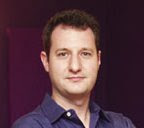Though there were many brilliant gems of audio wisdom which Dave shared with his students, one in particular which stands out in my mind was something Dave referred to as "Kentucky Voicing".
In theory, every recording or audio mix should be performed in an ideal acoustical environment... one which allows you to hear the sound as it was originally captured during recording. But in the real world, there really is no "ideal" environment. The acoustic quality of rooms can vary from studio to studio and even from day to day, speakers can alter the sound of a recording, and budgets often necessitate using less than perfect equipment which can add noise or worse into the environment. All of these factors can influence your mix.
Kentucky Voicing is a technique which can help you compensate for these factors and create consistent audio mixes by minimizing the effect of the equipment and environment on your decision making process during a mix. In essence, you use familiar recordings to create a "baseline" by which to judge your own mixes.
Here's how Dave Moulton describes the process of applying Kentucky Voicing to your own work:
"First adopt a monitor that you can live with. This means (a) that you can afford it, (b) you can stand listening to it for extended periods of time, and (c) you find that you actually enjoy listening to your favorite recordings on it.
Second, thoroughly 'learn' at least five or six of your favorite recordings (at least) on this speaker system. Choose well-known and successful recordings (Steely Dan, for instance). Memorize 'the way they sound.' When mixing your own work, work towards emulating 'the way they sound' on your speaker system. This will give your recordings the best chance of sounding good over many different loudspeakers.
Third, when working on monitors other than your own, take along your 'reference' recordings and play them first, before you work on your own material. Get 'the way they sound' in your ears, and, to repeat, mix toward that sound quality. If your reference recordings sound bass-heavy, for instance, mix your own work bass-heavy. This will tend to neutralize the effect of the colorations of the different monitors on your work."
Applying the concepts of Kentucky Voicing to Images
When I first began working in film and video, I found that many of the tips and tricks I'd learned in the audio field could be applied to visual arts as well with a bit of adaptation and Kentucky Voicing was one of the first concepts I carried over.
In both film and video, footage is often color corrected as the last step in the production process before the project is distributed and/or broadcast. It's during this phase of production where the final contrast and brightness of the footage is determined, blacks are made black, whites are made white, and images are tweaked to create the perfect natural or stylized look.
Ask any colorist or television engineer and they'll tell you to NEVER attempt to color correct or balance images without using a calibrated broadcast monitor and video scope. But what if you can't afford to purchase a nice expensive calibrated broadcast monitor and video scope which can run well over ten thousand dollars? If you have to make do with a consumer television or computer monitor as your primary color correction monitor, why not apply the same techniques used in Kentucky Voicing to your images as well? Keeping with our theme, let's call it "Kentucky Viewing".
(Incidentally, I have no idea what any of these techniques have to do with Kentucky. The term was originally coined by Dave Moulton, and if I remember correctly, the technique just needed a name for descriptive purposes and it seemed as good a name as any. It does have a nice ring to it, doesn't it?)
First I would try to get your selected monitor as close to "calibrated" as possible. Some monitors and televisions have more controls than others, but at a minimum, you should be able to set the brightness, contrast, and hue to get the image in the ball park. I would strongly recommend using color bars to make your adjustments, but at the very least, find footage of something you know to be pure white and use that image to remove any color casts in the image.
Then, before you begin correcting any footage, pull out a few of your favorite movies or television shows and spend some time watching them on the monitor you've chosen. Notice the details in the image. How black are the blacks? How bright are the whites? Are white objects really pure white, or do they have a slight color cast?
Once you have a good idea what your favorite images look like on your work monitor, take a shot at color correcting your own footage using the same monitor. Try and make your images look like your reference footage. If you can, grab a still frame from your reference footage and keep it handy to use as a comparison.
On more than one occasion I've used this technique on my own projects and have had excellent results. Just keep in mind that if you're planning on broadcasting your project, you'll still need to view the final product on a scope to make sure your black levels and white levels are broadcast legal. This method is not designed to replace a calibrated monitor and scope, just like Kentucky Voicing is not designed to replace a well designed studio listening environment. It's just an extra tool you can use to help get the job done in a pinch.
If you'd like to read some of Dave Moulton's other gems of wisdom, you can do so at his company website at http://www.moultonlabs.com/






